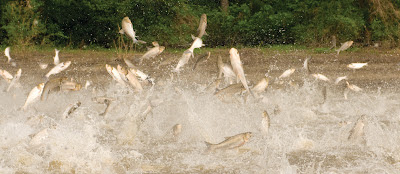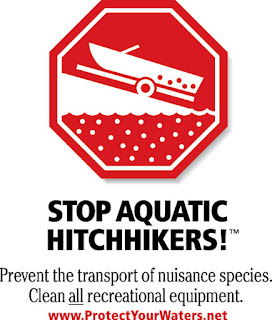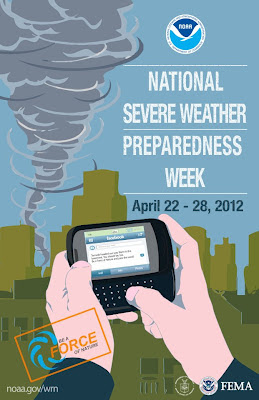“Federal officials are studying how to help Great Lakes communities better prepare for hazardous floods.‘It will be the most comprehensive study ever conducted of shoreline flooding,’ said Ken Hinterlong, a senior engineer with the Federal Emergency Management Agency. So far, only ‘…the first phase of the project is done, which is a basin-wide data collection for Lake Michigan and Lake St. Clair.’”
Category:
In the news: Federal study to help Great Lakes communities prevent floods
May 21st, 2012 by Irene MilesChicago green roofs help protect Lake Michigan
May 16th, 2012 by Irene Miles“A green roof acts like a natural sponge that absorbs stormwater and curtails runoff,” Aaron Durnbaugh, the university’s director of sustainability, explained in a statement. He went on to note that the university’s Chicago campus is located on the shores of Lake Michigan, which makes reduced runoff a real priority for protecting local water quality.”
In the news: Further research on Lake Michigan-based wind power
May 15th, 2012 by Irene MilesInvasive fish could be a food solution for Haitians in need
May 10th, 2012 by Irene Miles Sometimes, what can be considered a problem in one area of the world might prove to be a solution to a problem somewhere else on the globe. One such case is the use of Asian Carp as a high-protein food source for Haitian children impacted by the devastating earthquake in January of 2010.
Sometimes, what can be considered a problem in one area of the world might prove to be a solution to a problem somewhere else on the globe. One such case is the use of Asian Carp as a high-protein food source for Haitian children impacted by the devastating earthquake in January of 2010.
“Some innovative thinking is now turning the problem fish into a high-quality protein source for the children at Zanmi Beni, run by Operation Blessing International. Researchers at NOAA’s Louisiana Sea Grant program and the Louisiana State University (LSU) AgCenter have successfully produced canned Asian carp pleasing to the Haitian palate. Ultimately, the product could deliver high-quality protein to people in need, be a boon to fishermen, provide a new opportunity for canneries, and reduce the population of an unwanted invasive species.”
Louisiana Sea Grant Fisheries Specialist Julie Anderson attended IISG’s Asian Carp summit and was able to network with several people including Carol Engle of the University of Arkansas. Carol’s work had involved developing a USDA-approved process for canning Asian Carp, making it possible to safely prepare, store, and ship the food where it was needed.
New Discovery Grant projects – Green infrastructure, pharmaceuticals, and more
May 9th, 2012 by Irene MilesMuch like a gardener hopes that the seeds they plant will eventually bloom into a lush garden, Illinois-Indiana Sea Grant awards Discovery Grants, or “seed” grants, to a number of projects in the hopes that the initiatives will grow into something larger. In recent years, IISG has funded 35 projects focused on key concerns the program is committed to address; here are six new projects for 2012:
May is Illinois Invasive Species Awareness Month
May 7th, 2012 by Irene MilesNow is the perfect time to get people involved in the work of preventing the damage they can do right here in Illinois.
In addition to the links above, don’t forget to visit our Clean Boats, Clean Waters web page for simple and useful ways that boaters can join in the fight to prevent invasive species from spreading. You can also find information on how to volunteer for our Clean Boats Crew and provide in-person advice and tips at local boat ramps and marina.
Hands-on water quality projects continue for NW Indiana students
May 1st, 2012 by Irene Miles On April 19, Caitie McCoy invited Education Specialist Terri Hallesy, to visit Andrea Bock’s 4th grade science classrooms at East Chicago Lighthouse Charter School. The students have been learning about the Great Lakes Legacy Act cleanup project at Roxana Marsh and how to design a habitat. Jack Brunner, an EPA contractor whose employees work on-site at Roxana Marsh, was invited as a guest speaker to share his restoration work with the students. Caitie McCoy and colleague, Nishaat Yunus, actively engaged students in a discussion about key concepts associated with habitats and restoration projects. Students participated in a hands-on activity to design their own Roxana Marsh habitat by constructing a colorful classroom mural. Students were divided into groups and provided with photos depicting various elements contained within a habitat. Selected photos included nonliving elements, such as the sun and oxygen; above water living plants like black-eyed Susan and wild bergamot; and above water living animals such as the great blue heron and Peregrine falcon. Using various art tools, students designed and illustrated some of the components that comprise the Roxana Marsh habitat. Caitie McCoy and Terri Hallesy affixed the students’ creative illustrations onto a mural, which is now proudly displayed in their classroom. As a culminating event, Jack Brunner surprised the students by presenting a painted turtle that was found on the Roxana Marsh site and has been kept as a pet during the cleanup. The next step in this exciting restoration project will involve the students actually visiting Roxana Marsh to plant natives they’ve been cultivating in their classroom.
On April 19, Caitie McCoy invited Education Specialist Terri Hallesy, to visit Andrea Bock’s 4th grade science classrooms at East Chicago Lighthouse Charter School. The students have been learning about the Great Lakes Legacy Act cleanup project at Roxana Marsh and how to design a habitat. Jack Brunner, an EPA contractor whose employees work on-site at Roxana Marsh, was invited as a guest speaker to share his restoration work with the students. Caitie McCoy and colleague, Nishaat Yunus, actively engaged students in a discussion about key concepts associated with habitats and restoration projects. Students participated in a hands-on activity to design their own Roxana Marsh habitat by constructing a colorful classroom mural. Students were divided into groups and provided with photos depicting various elements contained within a habitat. Selected photos included nonliving elements, such as the sun and oxygen; above water living plants like black-eyed Susan and wild bergamot; and above water living animals such as the great blue heron and Peregrine falcon. Using various art tools, students designed and illustrated some of the components that comprise the Roxana Marsh habitat. Caitie McCoy and Terri Hallesy affixed the students’ creative illustrations onto a mural, which is now proudly displayed in their classroom. As a culminating event, Jack Brunner surprised the students by presenting a painted turtle that was found on the Roxana Marsh site and has been kept as a pet during the cleanup. The next step in this exciting restoration project will involve the students actually visiting Roxana Marsh to plant natives they’ve been cultivating in their classroom.NOAA and FEMA partner to Build a Weather-Ready Nation
April 24th, 2012 by Irene MilesSea Grant message reaches many thousands in Times Square — The Movie
April 23rd, 2012 by Irene Miles
In partnership with the American Veterinary Medical Association, the Sea Grant program created a 15-second public service announcement that aired on the CBS JumboTron “Super Screen” on 42nd St. in New York City from late December through March.
Recent News
- Coastal communities can tap into IISG resources as they manage beach sand and structures
- It’s time to apply for the 2026 IISG Graduate Scholars Program
- IISG’s Eliana Brown wins 2025 Illinois Extension Excellence Award
- We’re hiring eight interns for summer 2026
- In 2026, IISG intends to fund 10 research projects focused on coastal concerns
IISG Instagram
Join us next month at the Friends of the Chicago River’s Friends of the Chicago River’s annual Student Congress. We’re excited to attend this free, student-driven environmental conference where we will be leading the Great Plankton Race.
Learn about river issues, connect with peers and professionals, enjoy snacks & giveaways, and even see live animals.
Who: Open to all students, families welcome too!
Where: On the campus of Northeastern Illinois University
When: Saturday, February 28, 2026
8:30 a.m. to 1:30 p.m.
Learn more and register at the link in bio.
#TeachingTuesday #ChicagoRiver

✨ Start Your New Year with Great Lakes Learning! ✨
Kick off 2026 by exploring the Center for Great Lakes Literacy Resource Library. It’s your one-stop hub for lesson plans, activities, and tools to bring Great Lakes science into your teaching setting.
Visit the link in bio to dive in today!
#TeachingTuesday
#GreatLakes #NewYearNewResources

Join us for a hands-on Project WET Make-and-Take Workshop in Chicago!
📅 When: March 12, 2026 from 9:00 AM – 3:30 PM CT
📍 Where: 200 S Wacker Dr., Chicago, IL
💲 Cost: $25 (includes classroom-ready activity kits, lunch & refreshments)
🗓️ Registration closes February 26.
✅ Open to 3rd–8th grade formal & informal educators
✅ Earn 6 PD hours
✅ Leave with ready-to-use water education kits aligned to Common Core & NGSS
👉 Don’t miss out—space is limited!
Learn more and register at the link in bio.
@thengrrec

From supporting cutting-edge research to empowering educators, students, and Great Lakes communities, 2025 was a year of collaboration, learning, and impact.
Thank you to our partners, researchers, educators, and community members who made it all possible. Here’s to another year of protecting, exploring, and sustaining the Great Lakes!

Categories
- Aquaculture
- Aquatic Invasive Species
- Buoys
- Climate Ready Communities
- Coastal Resilience
- Director's Blog
- Education
- Featured
- Fellowships
- Fisheries
- Funded Research
- Funding
- Great Lakes Cleanup
- Great Lakes Data
- Healthy Waters
- Internships
- Jobs
- K-12 Education
- News
- Photos
- Program
- Recreation & Tourism
- Resources
- Sea Grant Scholars
- Stormwater & Green Infrastructure
- Sustainable Community Planning
- The Helm
- Uncategorized
- Video
- Water Resource Economics


